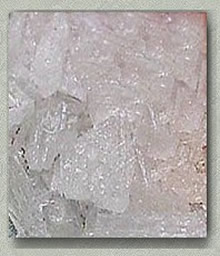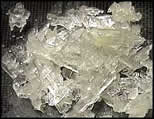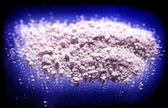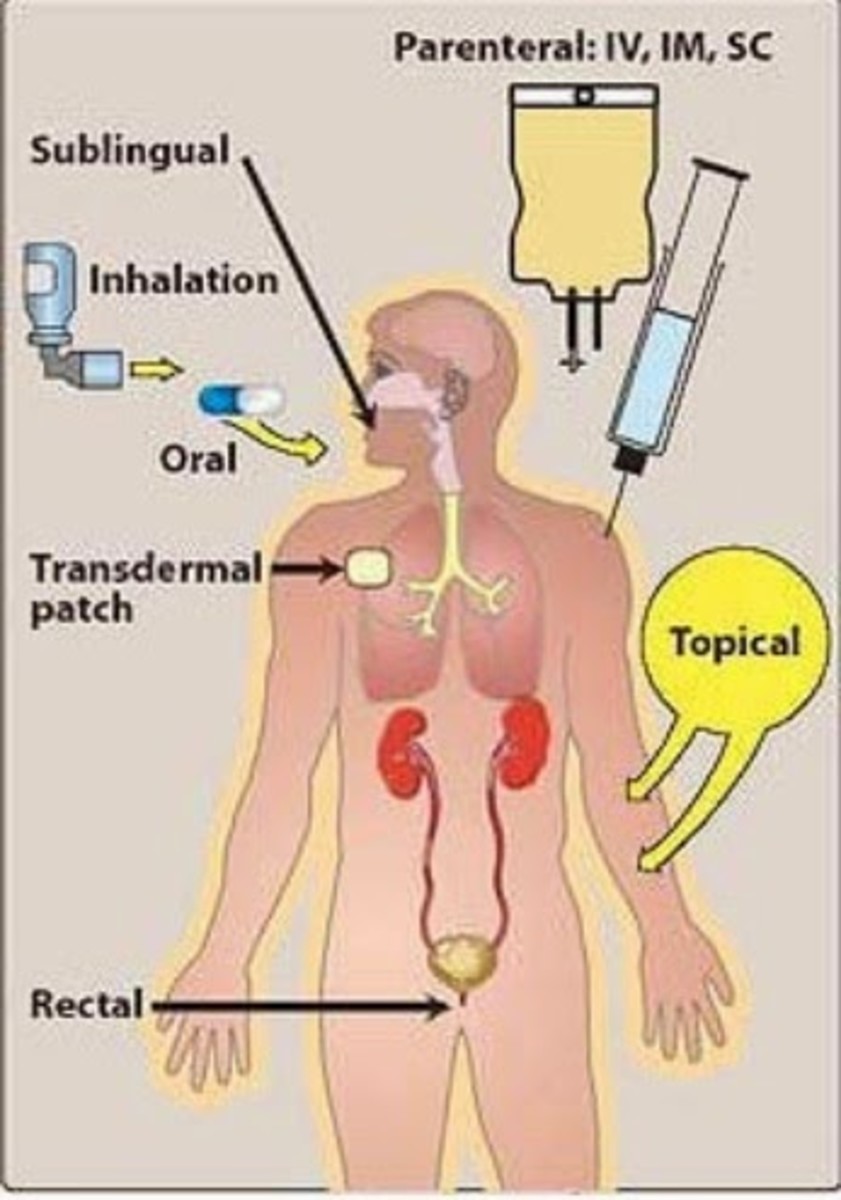Methamphetamine
Methamphetamine is probably the most famous abused drug nowadays. Abuse of this drug is rampant and abusers are looking for more excuses to make this drug seem like its helping users rather than destroying them. And it is famous worldwide. But different street names are used for this drug in different countries.
It's impossible to talk about methamphetamine without touching the facts about amphetamines. Methamphetamine is a drug that is very similar to amphetamine. Actually when the body is exposed to methamphetamine, methamphetamine quickly metabolizes to amphetamine. The effects of the two drugs are exactly the same that even the most experienced users couldn't tell them apart. Chemists who know the chemical properties of amphetamine and methamphetamine would say that the two drugs have almost identical chemical compounds.
Amphetamine's and Methamphetamine's Roles in Medicine
Amphetamines and methamphetamines are brain stimulant drugs. They activate the brain cells and increase the release of stimulants in our brain. In medicine, amphetamine and methamphetamine are used as a treatment for extreme obesity, attention deficit hyperactivity disorder (ADHD), and narcolepsy. It is used in treating obesity due to its effect of increasing the body's metabolism. ADHD is a brain disorder where the person displays a persistence of inattention and hyperactivity that is more obvious than other people their age. It helps ADHD patients by giving them improved impulse control, improved concentration, decreased irritability, and decreased anxiety. Narcolepsy is a condition in which the person falls into deep sleep during its attacks. It is used in treating this condition due to one of its effects of keeping the senses awake; therefore the episodes of deep sleep are diminished during treatment. Amphetamine and methamphetamine are used as short-term treatment, though. They are used only for short-term to prevent drug dependence from the patients. If used over longer periods of time, the physician should give the dosage within therapeutic limits to prevent drug dependence or abuse. Treatment from these medicines should be regulated and supervised by a qualified physician.
crystal meth


powder meth

Effects of the Drugs
There are different ways to take the drugs. It could be orally ingested (tablet form), snorted through the nose (powdered form), smoked (powdered form and crystal form), or injected (powdered form). The effects of the drugs vary on how the users, abusers, or the patients take it. The degree of the damage the drugs can cause to a person also differs. It may all depend on the behavior of the person taking the drug, how long he has been taking it, and how dependent he is on the drug. Of course, the person who is taking it orally may be in therapy for a disease which had been mentioned earlier. And oral ingestion of the drug has a milder effect on the brain. Snorting and smoking the drug would directly go through the brain. Snorting, smoking and injection are used and practiced by addicts and the effects are more extreme.
These are some of the immediate effects of the drugs: increased wakefulness, increased focus, increased physical activity, enhanced mood, enhanced energy, increased mental alertness, excitement which they call rush or euphoria, feeling of power or the feeling of having superhuman strength, increased endurance, inhibits pain, and increases metabolism.
Other effects of the drugs may also include reduced appetite, dilated pupils, headache, restlessness, increased blood pressure, heart palpitations or uneven heartbeats, sweating, shaking, hyperthermia or very warm body temperature, talkativeness, violence, and paranoia.
When the effects of the drugs start to wear out, the user may feel depression, anxiety, fatigue, excessive sleeping, increased appetite, and they also have delusions or hallucinations.
Dangers of the Drug
Methamphetamine and amphetamine had always been warned as very highly addictive drugs. As a result, authorities from different countries have taken measures to limit the distribution of the drugs and the different ingredients used in making methamphetamine, especially ephedrine and pseudoephedrine.
Dangerous side-effects of the drugs include:
- Drug craving; the initial feeling of euphoria or rush wears out after the body metabolizes the chemical and the brain starts to adapt to the drug. Drug abusers are basically looking for the feeling of euphoria and so, during this phase, the user wants to use more to feel again the initial high he wants to feel.
- Committing violent and petty crimes to finance the expensive habit
- Violence resulting from paranoia or violence due to pleasure
- Panic attacks and confusion resulting from hallucination and delusion
- Uncontrollable movement may be caused by heart failure or stroke
- Twitching, similar to the twitching in Parkinson's Disease
- Depression, in which the person may become extremely violent or suicidal
- Permanent brain damage and psychosis
- Decreased inhibition
- Even after months of abstinence, the brain still continues to deteriorate
- Social and occupational deterioration
- Repetitive motor activity
- Mood disturbances
Only a few methamphetamine abusers are successfully rehabilitated. There could be numerous causes. It could be that the abuser has a bad attitude, a bad personality, the extent of the brain damage caused by the drug, the essence of the drug that is left in the body, or there could be other causes not related to the drug, like personal problems or pressures in life.
Other Illegal Uses of the Drug
Amphetamines and methamphetamines are used by professional and amateur athletes because of its strong stimulant effect. Athletes and probably their coaches believe that taking these drugs could enhance the athlete's performance levels. Some athletes have died using this practice. Drivers who drive for long hours also use this to increase their concentration level while driving. This could lead to car accidents. People who are very busy who feel that they need to stay awake and stay attentive to their jobs also use them. Students who want to enhance their school performance use them to improve their studies. These practices are illegal, unregulated, and pose danger to the health and well-being of the user. All these practices can lead to addictions to methamphetamines.
Ephedra Plant

History
Amphetamine was first synthesized in Germany in 1887 from its plant derivative, ephedrine. Methamphetamine was first synthesized in Japan in 1893. In 1919, crystallized methamphetamine was synthesized by reducing the ephedrine compound in ephedrine. Confusing? They used a chemical procedure to take that into effect. They call it the ephedrine reduction method.
At the first discovery of amphetamine, they couldn't decide what the drug could be used for. The drug was existent, but the disease where this drug could fit into, remained unknown. But in 1929, Gordon Alles synthesized methamphetamine and tested the drug on himself. He found that the drug stimulates the brain and could help improve breathing. And so, the first uses of the drug are for nasal congestion, marketed as an inhaler and as brain stimulant, produced in tablet form.
The first report about amphetamine addiction was reported in 1938, the year before World War II began. And on that same year, the first report of amphetamine-related psychosis was reported.
During World War II, soldiers of all forces, the Allied, Axis, and the Japanese military forces were using methamphetamine to boost their level of courage, increase alertness, and to stay awake for long periods of time. Adolf Hitler was taking amphetamine injections given to him by his personal physician.
After World War II, there was an oversupply of methamphetamine in Japan. The drug was widely distributed in Japan under the street name shabu. In 1951, the Japanese Ministry Of Health banned the drug.
During the 1980s, Steve Preisler who used the pen name "Uncle Fester" wrote a book entitled "Secrets of Methamphetamine Manufacture". It's still on sale with its seventh edition. This book had led to the increasing number of illegal methamphetamine laboratories. Be warned that methamphetamine laboratories are prone to burns, fires, and explosions. Not to mention the health hazards they pose to the people and animals in the immediate environment.
Active Ingredients of Methamphetamine
Ephedrine and pseudoephedrine are the precursor chemicals of methamphetamine. Ephedrine and pseudoephedrine are the naturally occurring ingredients of Ephedra plant or Ma Huang. Although pseudoephedrine is a naturally occurring ingredient of Ephedra, these can be made by yeast fermentation of dextrose. Because of this processing, pseudoephedrine can be produced in commercial quantity. Ephedrine and pseudoephedrine act like the adrenalin of our body. That's why methamphetamine users feel a sudden adrenaline rush.
Crystallized methamphetamines are made from powdered methamphetamine. Crystal meth is created by dissolving the powdered meth in water and alcohol together with its other ingredients. Heat and distillation is used for cooking meth. Once the finished product is removed from heat and allowed to cool, the once powdered drug begins to form into crystals. The drug doesn't end in the difference of the appearance only; crystal methamphetamines are much more potent than powdered methamphetamines.
Meth cooks usually isolate the active ingredients of methamphetamines to create high quality meth. The end-product of methamphetamine will show signs if they are not done well. And experts know the difference of high quality meth and low quality meth. Low quality in this case would indicate the mistake in manufacturing process.
But recently, meth cooks have discovered a way to dilute methamphetamine by adding cheaper ingredients into the drug. And most users couldn't be sure how pure their methamphetamines are, whether it's 10% pure or 100% pure.








